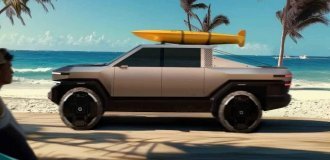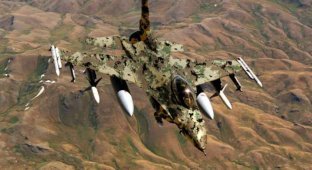On September 3, 2015, at a parade in honor of the 70th anniversary of the end of World War II, China presented its military equipment to the world. The latest equipment had a special pixel camouflage, which is widely used in the Chinese army. This post will tell you where this paint scheme came from.
The pattern, which resembles the coloring of computer game blocks, contrasts quite sharply with traditional camouflage. In addition, the latter has been used by the military since the 19th century: the colors imitating foliage and other natural features have proven themselves very well.

Bold mosaic camouflage is becoming increasingly used by militaries around the world, which seems counterintuitive; after all, nothing in nature is so rigid in form. But it really works - which surprises even the creator of a new type of camouflage, who developed the concept forty years ago.

In the late 1970s, O'Neill proposed to the US Army that square blocks of color would camouflage armored fighting vehicles better than full paint. His idea was to build a model that would work no matter how far the vehicle was from the observer. Large patterns work well at long distances, while small patterns work better at close distances. But patterns made from small squares, or pixels, can be colored to imitate both.

The experiment exceeded all expectations, but it took a long time for digital camouflage to take root. Convincing skeptical military officials proved difficult. The military are still conservatives.

Only by the beginning of the 80s were the efforts crowned with success. One of the leading designers of modern camouflage was Guy Kramer, CEO of HyperStealth Biotechnology Corp.

Another mystery about the modern camouflage design seen during the Victory Parade: some cars have bright blue blocks. For what? Some experiments have been done with blue tones - against the sky, or in snowy areas they really make sense. Guy believes that the armored vehicles demonstrated by China may be amphibious, which also makes sense of such a coloring.

Digital camouflage is now used to varying degrees by military forces around the world. But the future of camouflage is likely to be even more complex. Kramer is developing a version of digital camouflage that will actively change like a chameleon. The alpha version, which already exists in reality, is called SmartCamo. Such camouflage will probably be very expensive and require an independent source of energy - but it is still cheaper than human life.
























